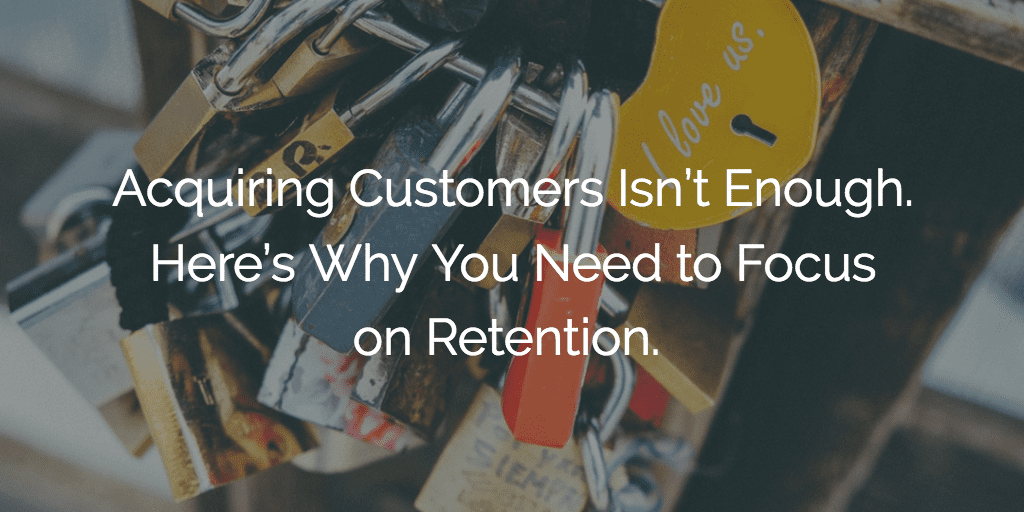Cost of Retention vs. Customer Acquisition Cost. It’s a classic match-up. They’re both essential players, but when it comes to healthy growth, which one of these best practices should you be betting on?

In the early days of SaaS, growing fast was everything. Money was poured into customer acquisition and businesses took off left and right, turning into unicorns before our eyes. But times are changing. Acquiring new customers isn’t the only way to bring in revenue, in fact, focusing primarily on that side of the funnel may be more costly in the long run.
Cost of Retention vs. Customer Acquisition Cost
“SaaS CEOs must move beyond just looking at revenue growth and eventual profitability, and start digging one level deeper for ways to grow in more capital-efficient ways and find a shorter path to profitability.” – Fred Shilmover, CEO, InsightSquared
Chances are these terms are familiar to you—they’re pretty common in SaaS and business in general—but here’s a quick refresher:
Cost of Retention: The total amount spent on keeping customer renewing their contracts. It includes costs like your Customer Success team, technology, and customer experience program. Our Customer Success metrics calculator makes finding your Cost of Retention easy work.
Customer Acquisition Cost (CAC): The total amount spent on signing on net new customers. It includes costs like your Sales and Marketing teams, technology, marketing campaigns, etc.
SaaS businesses rely on both retention and acquisition efforts to bring in revenue, maintain it, and increase it. But, the more customers a company signs, the more losses it incurs (you might also know this as the SaaS Cash Flow Trough). These fast-growing businesses need to be able to recoup the money invested in the growth and this isn’t always possible if customers churn before they renew. Therefore, neglecting to invest in retention means neglecting the customer base you’ve worked so hard to obtain.
Luckily, it’s cheaper to retain and sell to existing customers than acquire new ones. Obtaining a new customer can be anywhere from five to 25 times more expensive than selling to existing customers. In our CEO’s Guide to Downturn, we dive into the true costs of both of these growth levers. Here are some of the key findings:
Customer Acquisition Costs
- This includes the salaries (including commission), benefits, and overhead of the Sales Team and sometimes the Marketing Team as well
- CAC can be strongly impacted if you don’t take payments upfront and instead accept deferred or delayed payments
- It can easily take at least a year to pay back revenue
- Companies spend an average of $110 for every $100 of ARR acquired
Customer Retention Costs
- This includes the salaries, benefits, and overhead the Customer Success/Renewals Team(s)
- Commission is lower than Sales on average
- Depending how your organizations are set up, there are no marketing costs
- Customer Success/Account/Renewal Managers cover more ARR than their Sales counterparts with lower on-track earnings (OTEs)
- Companies spend an average of $12-15 for every $100 of renewal
Expanding the retention revenue ceiling
When measuring retention, you can do so in the form of Net Renewal Rate (NRR) and Gross Renewal Rate (GRR). If you want to brush up on your retention terminology, this blog post will fill you in. The best practice is to aim for 100% GRR—but what happens after that? Well, that’s where the real growth happens.
There are multiple ways you can go beyond a 100% retention rate and bring in net new revenue. This is where NRR comes in. Take into account the following when calculating NRR:
- Additional users, seats, or licenses
- Additional product
- Additional services
- Price increases
If you incorporate expansion and price increases into your retention strategy, you can grow from within your existing customer base and create new revenue opportunities. Delivering outcomes, proving the value of your product/service, and identifying opportunities along the customer journey will help you can maximize on these opportunities.
Optimizing your retention strategy
There are a few key components that you absolutely need in your retention strategy. First, you need a dedicated team of Customer Success or Retention experts that will handle the relationship post-sale. Once you’ve closed the customer, the real work begins. You’ll need people in place to handle onboarding, adoption, escalations, and the rest of the customer journey to renewal and onward.
These people will need a solid set of processes to make their work easier and more efficient. Whether you’re handling 100 or 1,000 customers, it’ll behoove all future efforts if you establish ways to tackle all the Elements of Customer Success. From enabling expansion, to gathering feedback, and much more.
Technology is also a necessity. It will supplement the work your team does and even make it easier to scale operations without adding headcount. Best practices dictate dividing customers into segments and technology can help low-touch customers stay engaged and happy while your team focuses on maintaining relationships with high-touch accounts.
Every business is unique as is their customers, so it goes without saying that the retention strategies you choose to use will not be the same as the executive sitting by you at the next Pulse conference. It can be overwhelming to figure out how to deal with your specific situation. Gainsight has created an entire Customer Success framework that’s inspired by hundreds of companies. These expansion and renewal best practices can be what tips the scales for you and accelerates growth for now and beyond.


